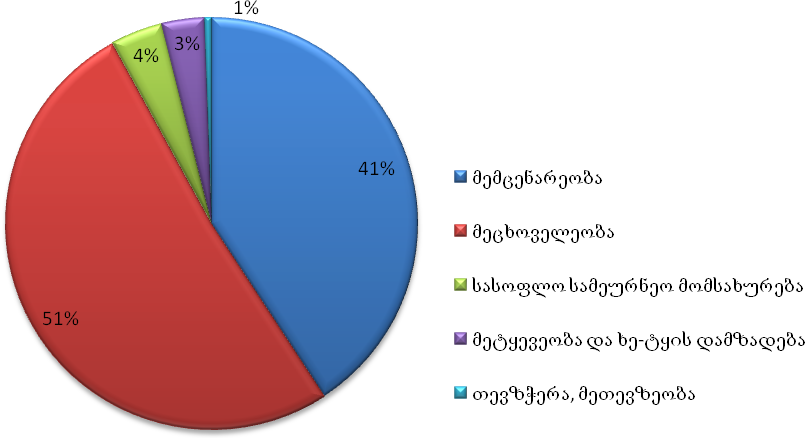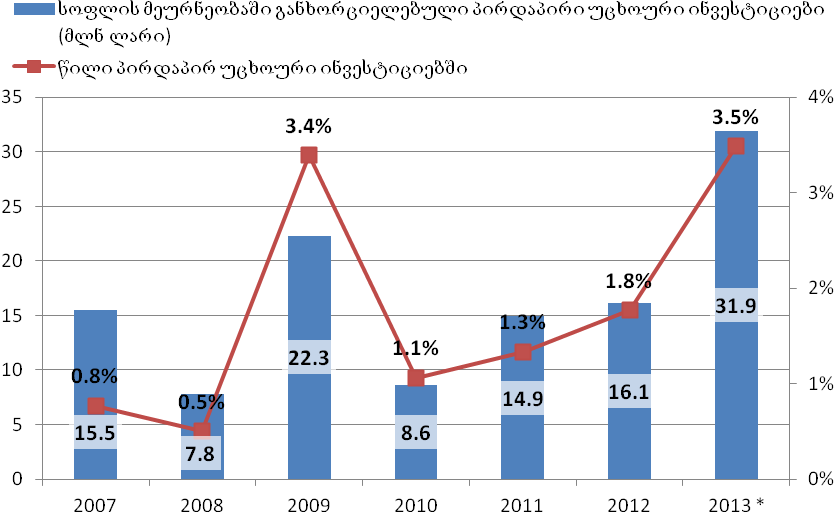On 23 July 2014, while delivering a speech at a session of the Parliament, Davit Onoprishvili stated: “The economic growth in our region was substantially reduced in 2013. This does not only include the South Caucasus, Commonwealth of Independence States members and former Soviet Union states but Eastern Europe in general. I wouldn’t even mention the European Union where the economic growth was under 1% or didn’t occur at all.”
FactCheck took interest in the economic dynamics of the region and verified the accuracy of the aforementioned statement.
By the estimation of the International Monetary Fund (IMF), the world economy grew by 3.2% in 2013 which is a normal rate. As for Eastern Europe and the Commonwealth of Independent States, a decline in the economic growth rates was observed in the majority of the states in 2013. According to the data of the International Monetary Fund, the economic growth in the members of the Commonwealth of Independent States was equal to 3.4% in 2012 while it reduced to 2.2% in 2013. In Central and Eastern Europe a 2.8% economic growth was observed in 2013 which was two times as much as in 2012 (1.4%). The chart below reflects the economic growth of the Eastern European countries in 2012 and 2013.
Chart 1: Economic Growth in the Eastern European Region in 2012, 2013 and 2014

Source: International Monetary Fund
The GDP growth rate was slightly reduced in most of the members of the Commonwealth of Independent States; however, there was a sharp increase in the GDPs of Moldova and Kyrgyzstan. The GDP growth rate reduction was particularly apparent in Armenia and the Russian Federation. The GDP growth rate reduced from 7.2% to 3.5% in Armenia in 2013 and from 3.4% to 1.3% in Russia.
Chart 2: Economic Growth in the Commonwealth of Independent States in 2012 and 2013

Source: International Monetary Fund
The economic growth in the European Union member states was under 1% in 2013
(Source), as stated by Mr Onoprishvili. However, the growth rates in the developing countries of Europe were slightly higher and amounted to 2%. It should also be pointed out that the reduction in the GDP growth rates of the highly developed countries is a normal process while the economies of the developing countries have higher growth rates as compared to the developed countries. Georgia is among the list of countries with developing economies. Therefore, comparing the GDP growth rates of Georgia with those of the developed countries would be incorrect.
A sharp reduction in the growth rates of the Georgian economy was observed in 2013. The GDP real growth rate was equal to 3.2% which was almost two times less than that of the previous year (6.2%). It should also be pointed out that by its economic growth rates Georgia ranked 41
st among the 153 developing countries of the world in 2012 while in 2013 it was down to 92
nd position due to the sharp reduction in GDP growth. The GDP real growth was the lowest in the second and third quarters of 2013 – 1.5% and 1.4%, respectively. It increased to 7.2% in the last quarter of the year. According to the Ministry of Finance Budget Implementation Report of 2013, the main reasons for the reduction of economic growth rates were as follows:
- Political instability
- Undesirable dynamics of the neighbouring states’ economies
- Reduction of state investments
According to the National Statistics Office of Georgia (GeoStat), the foreign trade turnover of Georgia was equal to USD 10,793 million in 2013 which was 5% more than in 2012. In addition, export increased by 22.4% and constituted 36.4% of the total foreign trade turnover. The top three export partners of Georgia in 2013 were Azerbaijan (24.4%), Armenia (10.9%) and Ukraine (6.6%). The chart below depicts the export from Georgia to its neighbouring countries in 2012 and 2013.
Chart 3: Export to the Main Trade Partners

Source: National Statistics Office of Georgia
As is clear from the chart, export to the neighbouring countries increased in 2013. It should also be pointed out that GDP growth rates increased in Azerbaijan and Turkey in 2013 and amounted to 5.8% and 4.3%, respectively. As for Russia, Armenia and Ukraine, in spite of the reduction of economic growth rates, export to these countries still increased in 2013. Hence, we can conclude that the economic dynamics of the neighbouring countries have not influenced the foreign trade of Georgia.
According to the annual report of the National Bank of Georgia, the main reason for the economic growth reduction was the fall of domestic demand which in its part was due to political instability. Even though domestic demand and private sector activities were increased in the last quarter of 2013, the main economic growth of 2013 was still due to foreign demand.
The Policy and Management Consulting Group (
PMCG) study also suggests that political instability was the main reason for the economic decline of 2013. According to the study, the legislative changes and the predictable actions of the government (such as the suspension on the practice of selling real estate to foreigners, the adoption of the new labour code and defensive strategies in international trade) facilitated the creation of an unstable environment for business which negatively influenced the inflow of investments into the country.
According to the National Statistics Office of Georgia, the total amount of foreign direct investments was equal to USD 914.4 million which was USD 2.8 million more than in 2012. The total formation of the main capital decreased by 12.2% in 2013 and amounted to GEL 6,653 million.
The table below depicts the formation of the GDP using the expenditure approach.
Table 1: Nominal GDP Calculated Using the Expenditure Approach (GEL million)
| Expenditure Categories |
2012 |
2013 |
Nominal Growth |
| Total Consumption |
23,507.9 |
23,532.6 |
0.11% |
| + Formation of Total Capital |
7,575.4 |
6,652.9 |
-12.18% |
| + Export of Products and Services |
9,983 |
11,986.6 |
20.7% |
| - Import of Products and Services |
15,124.3 |
15,473.0 |
2.31% |
| + Statistical Difference |
225.3 |
125.8 |
|
| GDP at Market Price |
26,167.3 |
26,824.9 |
2.51% |
Source: National Statistics Office of Georgia
As the table makes clear, the domestic demand increased slightly in 2013 as compared to the previous year and the formation of total capital was significantly reduced. The reduction was observed in the fields of construction (-10.6%), mining (-0.1%) and communal, social and personal services (-0.8%). As for the other fields, a sharp increase was observed in agriculture (9.3%) and industry (7.2%). However, in most of the fields growth was significantly lower than the previous year.
Conclusion
The world economic growth reduced from 3.5% to 3.2% in 2013. Low economic growth was observed in the Central and Eastern European regions as well. Economic growth in the European Union was less than 1%. The growth rate was higher in the developing countries but still lower than in 2012. However, it should be noted that the majority of the European countries are highly developed and, therefore, low economic growth is characteristic to this region. As for Georgia, it is a developing country and the negative effects of economic decline are significantly higher as compared to the developed countries.
It should also be noted that the reduction of economic growth in 2013 was mostly due to the decrease of domestic demand caused by the political instability following the government change. This is further confirmed by the dynamics of the foreign direct investment which amounted to USD 914.4 million, growing by USD 2.8 million only. The calculation of the nominal GDP using the expenditure approach also showed that the domestic demand was slightly higher (0.1%) than that of the previous year. The formation of total capital was significantly reduced as shown by the reduction of investments in the country.
As for the foreign trade, a sharp increase in export (22%) overshadowed the negative effect of the reduction of investments and the GDP grew depending upon the foreign trade (conclusion confirmed by the annual report of the National Bank of Georgia and the PMCG study). Hence, in spite of the economic growth reduction in the region, the unstable environment inside the country – and not the situation in the region – was the main reason for a GDP growth reduction in Georgia.
We conclude that Davit Onoprishvili’s statement: “The economic growth in our region was substantially reduced in 2013. This does not only include the South Caucasus, Commonwealth of Independence States members and former Soviet Union states but Eastern Europe in general. I wouldn’t even mention the European Union where the economic growth was under 1% or didn’t occur at all,” is
HALF TRUE.











